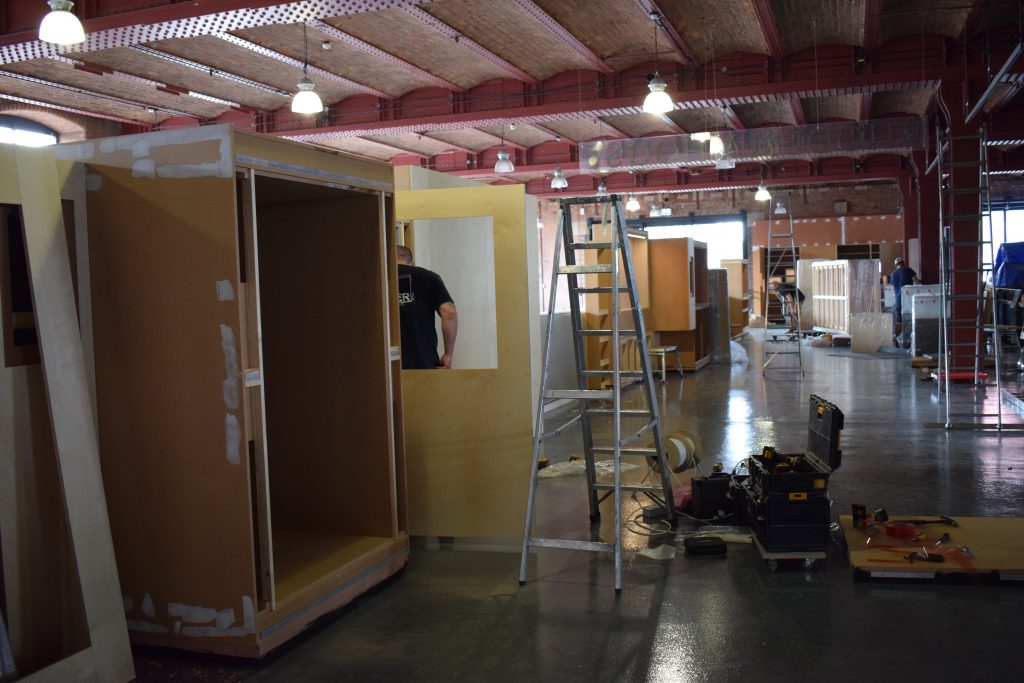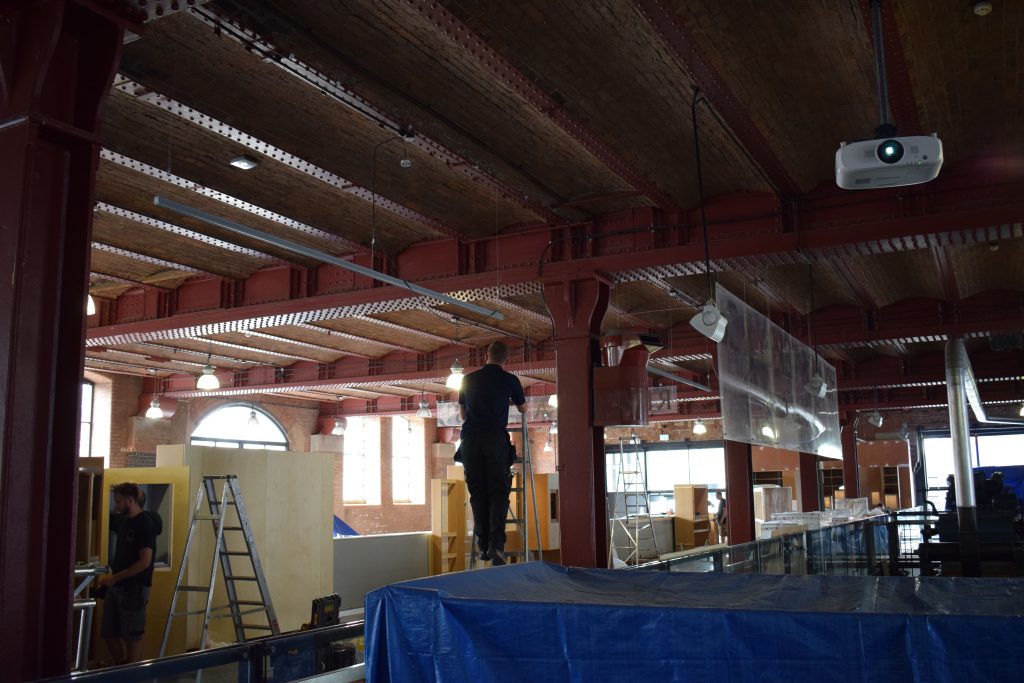
Science Museum Group © The Board of Trustees of the Science Museum
I’m Exhibitions Project Manager and Project Lead for the Textiles Gallery refresh. That means I lead a big team from across the whole museum; every department is included as we draw on the expertise and enthusiasm of everyone here. For instance, our Learning team have been really actively involved—not just from an associated programme point of view but we’ve also had a Learning member of staff embedded who has advised on the text, the interactive activities, even object selection. We’ve really tried to bring their expertise into the gallery project so it is as accessible and interesting for our museum visitors as possible. We also have Katie the curator—it’s really her vision and narrative that drives the gallery—plus team members from interpretation, marketing and communications, gallery maintenance, visitor experience and conservation. My role is really about bringing all of our dedicated staff together making sure we’re all working towards a shared vision.
Design and installation
I also lead on the design. I appoint the designers and work closely with them all the way through. There are three design stages that you go through—concept design, developed design and technical design. Concept is what it sounds like, where the designers come up with the overall concept for the gallery and we get to a point where we agree on an idea and a diection that we’re really happy with. And then developed design is where the really deep detail comes in about object placement, the showcases, the graphics, the images—that’s the point where you really begin to be able to visualise exactly what the gallery’s going to be able to look like.
The technical design is again what it sounds like, when the designers produce all the technical drawings that the build contractors can use to actually build the exhibition. That takes a really long time because there’s a lot of back and forth with the designers to make sure that we’re getting exactly what we need for our visitors. Some of the very small details can end up taking a lot longer than you might imagine because we’re really committed to making sure that it’s the best that it can be in every area; for example, I spent a lot of time over the past couple of weeks discussing what hinges we should use on one of our interactives.

The final thing I lead on is the installation. That involves working with the build contractors to make sure everything is built to specification and problem solving as we go. Sometimes when you have built something and planned to install it in a certain way it doesn’t always quite work. You have to work together to figure out what the solution is and how we can solve that on site, quickly. As with all exhibition projects it’s a tight turnaround to get a lot of work done in a short space of time, so we need really time-effective solutions that don’t compromise on quality.
building the gallery
The first things we did on the build was the flooring and upgraded the power in the gallery, both of which are actually quite complicated tasks in a grade II listed building, because we can’t fix in to many of the architectural features. We can’t drill into any walls or beams, so it becomes quite a complex task to work with the contractors to make sure we’re really sympathetic to the building but also make sure we have the facilities that we need for a permanent gallery that will last us into the future.
All of the new display cases and set works are being built by our contractors off site, and just last week the first of those set works started to arrive on site. The set works are the design elements that go around our cases to make the display look really beautiful—it’s a bit like a set in a theatre. Just this morning we’ve started to install what will be one of the show stopping design elements of the exhibition – a really beautiful end panel with a reproduced archival image that will hold about 30 pieces of our industrial archaeology collection which we’ve never been able to have on display before.

Science Museum Group © The Board of Trustees of the Science Museum
Once all the set works are in then we need to install the objects, which is a really important part! We’ll work with our conservation and collections care team as well as specialist mount makers. We’re hoping that will take just one day—we have a large team who have lots of tasks to do!
challenges and successes
There are lots of challenges involved in designing and installing a new exhibition. The whole design process is a challenge. We often encounter potential challenges in how we plan to interpret objects that need a design solution. One of the challenges we faced was that when we got the samples of the colours on site and took them into the gallery we realised that one of the colours that we’d selected clashed with the brickwork – that hadn’t been apparent in the 3D renders, or images, of the gallery. That took quite a long time to solve—we changed the colour and then we actually also changed the substrate, the material it was printed on so it had a different textural quality to the bricks, meaning it was complementary rather than clashing.

Science Museum Group © The Board of Trustees of the Science Museum
That’s one of the challenges of installing a permanent exhibition in an existing gallery—you have to work with what is already there, but that is also what’s interesting and exciting about working with our buildings because they’re so beautiful and interesting, and they have all their own features as well. We’ve really been concerned that we work with the architecture and not against it—one of the big aspirations for the project is that we strip back a lot of the clutter and reveal how beautiful that warehouse building really is. The warehouse actually has an intrinsic connection to the textiles industry that’s not necessarily apparent straight away; it was a goods warehouse which cotton goods would have actually travelled through.
The other challenge that I’m anticipating is that there is always likely to be some kind of problem solving that we need to negotiate when fitting the set works. If a measurement is off by even one or two millimetres it can cause problems with your layout which means you might have to do some on-the-ground thinking to reorientate that space. We have a really great set of contractors working on site with us and so far we haven’t faced a problem like that, but I’m confident that we’ll be able to work through anything that arises.
nearly there!
I feel excited—it’s been the culmination of about a year’s work that’s included everyone from across the museum. I hope that everyone who has worked on the project feels really pleased with what we’ve managed to produce at the end of it.
My favourite element of the gallery that we’ve been able to introduce is a participatory, on-gallery learning space which we’ve called the conversation space. That will be on the lower interactive level and it will be a changing home for our programme where we can display more of our objects, change them more regularly than we would ever have been able to do before and have a real, genuine exchange and dialogue with our visitors about our collections, our plans for the future and about the really important themes of our museum. I’m excited about that, and also in the long term I’m looking forward to seeing what visitors tell us about our collections.